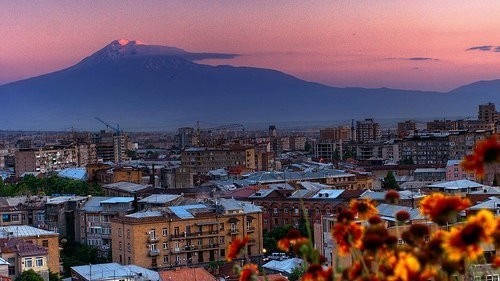
“Armenia has a class of “30-something” technocrats, whose western education and global outlook means they are less rooted in the Soviet mentality than their elders. That bodes well for the future,” The Economist writes in a blog-post about Armenia published this week.
The rest of the publication is not so optimistic, however.
The Economist mentions 14.2% contraction of Armenia’s GDP in 2009 and says while Armenia’s economy is recovering and the official statistics claim 8 percent unemployment, 48% of respondents told a recent survey they were looking for a job.
“Over one-third of the country lives below the poverty line. Complaints of corruption are widespread, and inflation is high,” the blog goes on to say. “Low rates of tax collection-19.3% of GDP, compared with a 40% average in EU countries–limit the government’s reach. Cracking down on tax evasion could increase government revenue by over $400 million, says the World Bank. A few, high-profile businessmen dominate the economy. Their monopolies and oligopolies put a significant brake on business development. Their influence also weakens political will for the kind of reforms that the country sorely needs.”
Back to the Armenian democracy, the Economist says it “has lots of room for improvement.”
“Abuse of administrative resources, inflated voter lists, vote-buying and pressure on voters were just some of the irregularities that took place in May,” it says and notes, that public trust in the country’s democratic institutions is low, and cynicism is widespread.
Linking to a recent publication by the International Crisis Group and a 2010 book by Tom de Waal the Economist agrees, that clean presidential elections in February 2013 are crucial for Armenia to deal with its internal problems and overcome the “sleeping volcano” that is the conflict with neighboring Azerbaijan over Nagorno Karabakh.
“The main fighting stopped in 1994 but between April 27th and June 20th this year, at least eight Armenian and seven Azerbaijani soldiers died. That’s by far the worst death toll of any conflict anywhere in Europe (even including Russia’s troubled North Caucasus). If it were happening in the Balkans, say, the world would be watching worriedly. But it isn’t,” The Economist concludes.
6 Comments
Comments are closed.
This is depressing… 🙁
Because it’s not happening in the Balkans, it’s not worrisome to Europe?
Well, Armenia is not Europe. At best, it’s a Russian province. At worst, it’s a mutant with Dubai and Glendale as parents born in the toxic environment of Russian sphere of influence.
Armenia is Eurasian, or South Caucasian. It’s definitely not a Russian province and certainly not a mutant of anything. Under Russia’s influence since it serves Armenia’s interests (and serves Russia’s to have an ally in the region), but those words couldn’t be further from the truth.
🙂 I applaud your enthusiasm.
Armenia has not got even the tiniest of chance of developing and maximising it’s well educated man/woman power while the govt and parliment is run by completely imoral, unscrupulous, theiving, self serving thugs who live who think Armenia is their personal banking system.